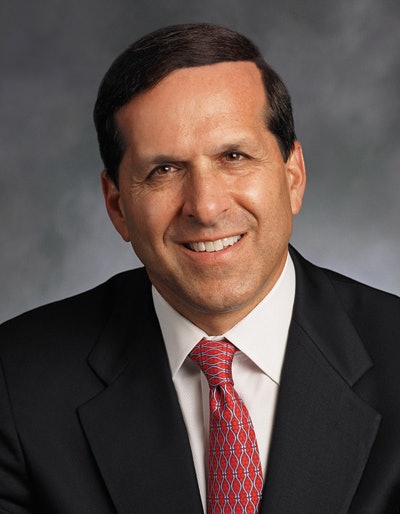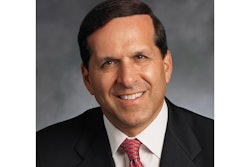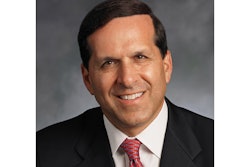As the CEO and founder of a dental management consulting firm whose mission is to increase practice production for clients, it might seem that my answer is always yes when asked whether bigger is better as it relates to dental practices. But lessons learned over the last 40 years, observing mistakes -- and even implosions -- indicate that a bigger practice might not be what everyone wants.
Understanding dental and societal trends
 Dr. Roger P. Levin.
Dr. Roger P. Levin.
After graduating from dental school, many dentists at some point enter private practice. Whether you work as an employee for a few years, take an associate position, become a partner, purchase equity, or open a practice, there is one universal principle: You need to maximize growth to be successful.
In the early stages of their career, most dentists want growth. There are student loans to pay off, practice debt, lost time of not having income while you were in dental school, lifestyle desires, family needs, and retirement savings. The list goes on. Because of that desire for growth, many dentists consider options that may be overly aggressive, depending on their specific background and situation. Frequent growth strategies include the following:
1. Add many more practices quickly, stop doing dentistry, and just manage them. To some, it may be desirable to have numerous practices, not do any dentistry, oversee the administration only, and have lots of free time and money. This can be done. The real question is whether or not it is right for you. Expansion takes money and has risk. If the expansion works and the practices do well, and you have strong management skills, then this scenario can work.
The reality is that most dentists are not good managers at all. They fall into the mistaken belief that because they were able to build one successful practice, they can build three, five, or 10. Managing a large group of practices takes business education, training, and experience -- things not taught in dental school.
2. Buy a big building and rent part of it out. Then there are dentists who decide the path to growth is to buy a large office building for their dental practice and lease the rest out. It certainly can be a path to growth, but again, there are risks and debt service. I generally like the idea of dentists owning a building for their practice. However, owning a really big building and expecting to rent part of it out ratchets up the risk.
3. Become a multispecialty practice. This is basically a practice that has general dentist and different specialists all under the same roof. It is one thing to add a specialist one day a month to do procedures to increase revenue and cash flow. It is another to try to build a true multispecialty practice where each individual specialist has significant ties to the practice. There are many challenges with multispecialty practices, including these two hurdles:
- First, other general dentists will not typically refer to a specialist who is in a practice with another general dentist. They are afraid that the patients they refer will stay in that practice with those general dentists. Despite reassurance from the specialist, there is still a paranoia that exists, diminishing the chance of receiving a high level of referrals.
- Second, not all specialists are rewarded equally. It is very difficult to keep each individual specialist in a multispecialty practice equally busy and financially satisfied. One may be very busy while others are not.
Do you truly want a bigger practice? That's the real question.
The best way to determine your authentic desire is to create a strategic plan. The process of doing so will force you to uncover and then answer the key questions about how much and what type of growth is best for you.
Having participated in hundreds of strategic planning discussions for dental practices over the last 40 years, I can tell you that in most cases, the dentist only has a general idea about what is right for them. The have a "top line" concept but haven't spent any time analyzing what it will take to execute it.
For example, I recall a dentist wanting to grow by purchasing the numerous practices of a retiring dentist in the area. As we analyzed the idea, it became more obvious that some of the practices were not worth purchasing, some made sense and others did not. Before making any significant changes and starting down a growth path, take time to truly analyze the question, "Do I really want a bigger practice?" and all the things that come with that.
Many of the stories that you hear are simply not true. People love to talk about their wins, and they love to exaggerate. We all like to look good and brag about "the stock in our portfolio that tripled in price" but rarely talk about it coming back down to Earth before we sold it and realized a profit.
Not all growth ideas work. In fact, many fail. If you have a good plan for growth and have evaluated the plan with others and experts, it may be a wonderful idea. But make an informed decision as to whether or not you really want to (or need to) go for it. And if you are within 10 years of retirement, be extremely careful.
Business growth is always admired. There's nothing wrong with adding practices, buying a building or expanding your current office. These are all proven strategies that will contribute to production, profit, and income, when implemented properly and guided by a well-structured strategic plan.
There can be many different levels of growth. You want to select the one that works for you. A young dentist wants to grow quickly in order to add income and retire debt. A dentist, a few years from retirement, wants to be more cautious about how much growth and investment takes place and whether or not there will be enough time for a return on that investment. And then, of course, there's everything in between.
Dr. Roger P. Levin is CEO of Levin Group, a leading practice management and marketing consulting firm. To contact him or to join the 40,000 dental professionals who receive his Practice Production Tip of the Day, visit LevinGroup.com or email [email protected].
The comments and observations expressed herein do not necessarily reflect the opinions of DrBicuspid.com, nor should they be construed as an endorsement or admonishment of any particular idea, vendor, or organization.



















